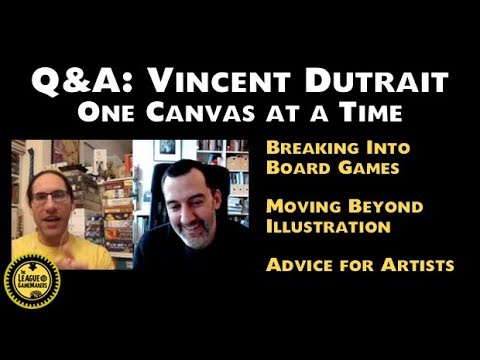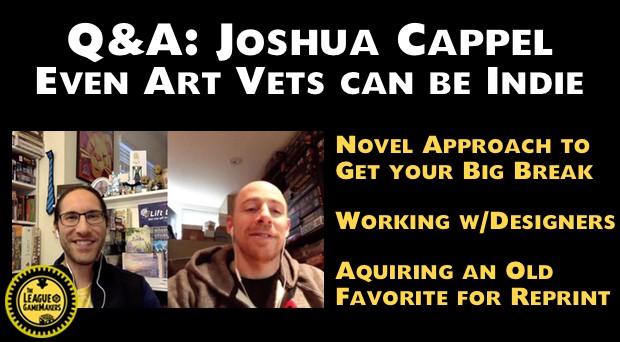
From the initial game design inspiration through the many stages of development, flexibility is needed to end up with a successful, fun and well designed game.
IF YOU THINK YOUR INITIAL GAME DESIGN WILL END UP BEING YOUR FINAL PUBLISHABLE GAME DESIGN, IT’S PROBABLY THE FIRST GAME YOU’VE DESIGNED.
THEME VS MECHANICS
Whether you start a game design from a thematic approach or from a game mechanics approach you should expect to make many design changes and modifications. I almost always start with theme so this article might be somewhat influenced by that bias; however, most likely both beginnings will eventually involve both theme and mechanics requiring the designer to be flexible but not indecisive. Whatever changes, modifications and eliminations your design goes through you should always keep its core gaming experience in the forefront of your thinking.
Once you’ve identified your design landmark you won’t be indecisive and yet you can still be flexible. In this post I’m not going to re-discuss the philosophy of “design landmark” which Stephen DeBaun has already done very well. Rather, I’m going to take you down the road of changes, modifications and game mechanic eliminations I experienced in bringing Breaking News – Through the Generations to a solid prototype ready for a publisher.
INITIAL INSPIRATION
My initial game design inspiration was a desire to give the players the core gaming experience of dynamic and dramatic aspects of breaking news in the news media. Here’s a brief description of the first design concept.
- Player: Director of TV News
- Multiple Scenarios: Terrorism, Car Chase, Barricaded Suspect/Hostage Situation, Wildfire & Kidnapping/Abduction
- Play Time: Various depending on scenario – e.g. Car Chase = shortest; Terrorism & Kidnapping/Abduction longest
- Play:
Each turn draw & build hand of news leads – hand limit
Each turn play, discard or hand affiliate card who must discard
After # of turns as per scenario round ends and news source card is drawn
Round is scored/collect TV audience ratings
- Scoring:News leads cards that match scenario symbol & news source card symbol would score X pts & receives 1 TV audience rating
2 News leads cards that match scenario symbol & news source card symbol would score double pts & receives 2 TV audience ratings.
This initial game design was short lived. It didn’t get to the prototype stage and play testing. When conferring with my co-designer, it became apparent the design was trying to tell too specific & detailed story line for each scenario. Players did not have real play choices. It was too much chance card drawing. Strategy would be very difficult to build since the News Source card which drove the scoring possibilities wasn’t drawn until after all the turns were completed. So, back to the drawing board.
2ND DESIGN CONCEPT
SIMPLIFY
The 2nd Design Concept transitioned away from a card to a tile collection game.
- Player: Each had a Player Mat on which to
fill News Leads tile slots to match up with News Scenarios. - Turn Order & Tile Selection: A unique game mechanic in which
the action board would be randomly filled with news action tiles with scenario type back face up and a random number of actions on reverse side face down.
The starting player selected a turn order placing their marker on the current turn order track. Choosing to go first in turn order the player would get 1 or 2 actions; whereas going last in turn order the player would get 3 or 4 actions. - News leads pools: located on a news leads resources game board each scenario pool was seeded with a scaled number of news leads tiles face up.
- Players Turn: A player’s first action must be to select a news leads tile of the scenario type for their turn order and may place it directly onto a matching news scenario on their player mat. Then any additional actions could be from any scenario pool. After all the player’s actions they place their marker on the next round turn order track on their choice of position.
- End Game: Play continues until a player fills two of their news scenario, the round is completed and the game ends. All players score their completed news scenarios and add in any bonus points. The highest score wins.
Play testers on this version felt that it worked and had elements of fun. The issues with this version was that the players were each playing a solitaire game with the only interaction being first to obtain the tiles they needed. There were some player choices to be made, but the fun factor did not equal the amount of work in playing the game. So, back to the drawing board.
CURRENT CONCEPT
AT LAST THE “DESIGN LANDMARK”
BREAKING NEWS THROUGH GENERATIONS OF MEDIA
Play testers commented that it would be fun to visit breaking news in different periods of news delivery media. The giants of the news media empires have been so influential in the progress of news delivery media that it was imperative to include them in the design. The player’s goal would be to grow these moguls’ media empire through four generations of news delivery styles and technologies.
Not all empires would have existed at the beginning generation and lasted through to current times. We took exception to reality for the sake of game play.
- Players:
Select various moguls from Bennett of the late 1800s to Ted Turner of today - Generations:
Each media empire has its own resource assets which come into play at different points in the progression through the generations. At first there were four generations to grow through: Print, Newsreel, Television & Digital Media. To reduce gameplay time the Print and Newsreel generations were combined.Each generation would have 3 turns and the number of Workers with which each player started a turn would scale up from 2 for Print up to 4 for Digital Media. - Victory Points: Players score victory points in four ways:1. Mogul Empire Resources: (as indicated on mogul cards above)
2. Resource Tree Development: Through worker placement, players achieve progressive levels on three branches of a tech tree: technology, organization and equipment/skills. High scores are counted each generation.
3. News Leads: Scored both at end of turn and combos scored at the end of generation.
4. End game money. - Worker Placement
A couple examples of mechanics in Breaking News. A player can hire workers for different lengths of time, take special assignments or go for a news scoop:Hire Additional Workers: Play testing spawned an additional step in a turn allowing players to hire an additional worker.The unique element in this adding additional Workers mechanism was to allow the player the option of hiring the worker just for the current turn, for the current generation or the current generation and the next generation.News Scoop: The worker placed here does not get cleared at end of the turn but on the next turn before any other worker is placed, the player has first choice for that worker. This mechanic was added much later in play testing when testing revealed that a way for a player to improve his turn order other than by adjusting his score was determined to be a needed addition.
- End Game: Play continues through the end of the Digital Media Generation. After the end generation score/pay out is done, remaining money is converted to VP’s and high score wins.
PLAY TESTING
With Designers: When in the early stages of development of a game, a designer may want to focus their play testing on a group of fellow designers and experienced gamers. At this stage you will still be looking for your “design landmark” and more open to radical changes.
In the Field: However, when the design has found its “design landmark” and the game play becomes solid, flexibility should be curtailed. Play test focus could be transferred to the group of gamers who would most likely buy your game. You can find these groups at game conventions, local gaming groups’ periodic gaming sessions and board game cafes.
One reason for transitioning play testing away from a group of game designers is that designers when giving their “constructive suggestions” often can start down a completely different game path from the game you’re developing. Although that game path might lead to a valid, good game, it’s not your game and you could become indecisive.








